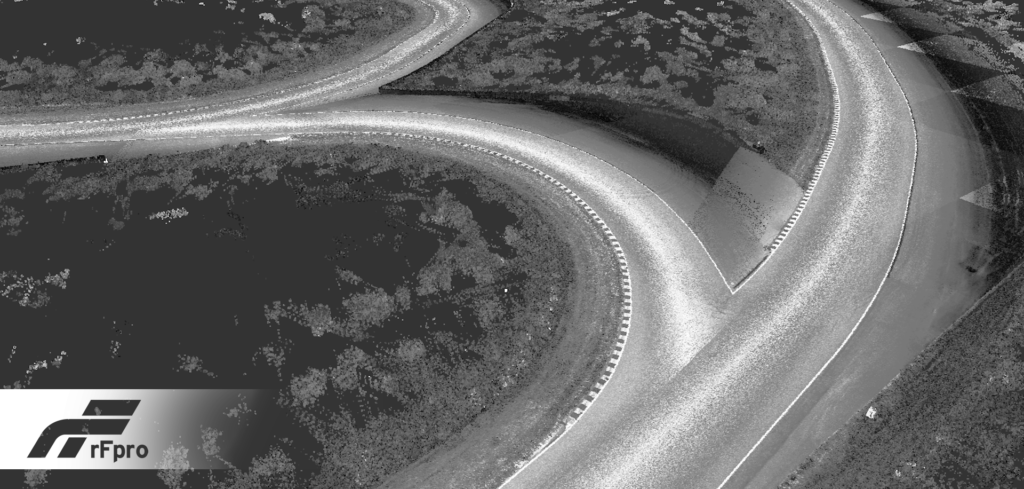UK-based software specialist rFpro says is developing a highly accurate virtual model of the handling track at the Nardò Technical Center in Italy. The digital twin will enable vehicle manufacturers to accelerate the development of next-generation electric vehicle platforms by testing them in a fully representative virtual environment before correlating and validating the results on the track.
“As the industry moves from ICE to electrification, vehicle dynamicists are having to rewrite their rule book,” explained Matt Daley, operations director at rFpro. “The way an electrified powertrain interacts with the chassis is significantly different from that of a traditional engine. As a result, vehicle dynamic engineers want to accelerate their understanding of this change to prevent issues arising later in the development cycle.”
rFpro’s digital twin of the Nardò handling circuit will allow engineers to assess and benchmark vehicle performance quantitively at the start of the design cycle. This includes optimizing the trade-off between motor type/size and battery sizing to meet range and acceleration targets. It also facilitates driver-in-the-loop simulations for additional subjective assessments, such as ride and handling.
“By creating a digital twin of our handling track, we will enable manufacturers to speed up their chassis development programs for systems such as suspension, steering and braking,” added Antonio Gratis, MD of the Nardò Technical Center. “Through simulation, they can progress further and faster through the development process and arrive at the track with a more mature design, making more productive use of all the available track time. We are also seeing demand from specialist suppliers, such as tire manufacturers, who are continually seeking to reduce development lead times.”
The Nardò Technical Center is a go-to resource for major automotive manufacturers. Its 6.2km-long handling track features a 1km straight and 16 corners of varying radii and speed. Its renowned layout, which includes crests, bumps and curbs, makes it ideal for developing new chassis technologies. To be effective as a development tool, the digital twin must correlate accurately with the real world. To achieve this, rFpro utilizes phase-based laser scanning survey data to create models with an accuracy of around 1mm in Z (height) and X and Y (position).
A core feature of rFpro’s software is its Terrain Server surface model that enables a high-definition surface to be simulated. By capturing detailed surface information that is missed by point-based sampling methods, a very high correlation with the actual road surfaces used during physical testing can be achieved. This enables the use of the digital model for vehicle dynamics applications, even allowing ride and secondary ride experiments to be conducted by real-time models on driving simulators.
“The Nardò proving ground is a world-class, controlled environment for track-based vehicle dynamics development,” concluded Daley. “An incredibly detailed digital model of it becomes an integrated part of a customer’s continuous software development toolchain, significantly reducing overall engineering development and validation time – and therefore cost.”


